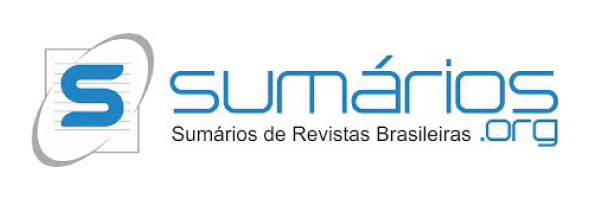Frontal Bone Cranioplasty Using Customized Implants Through A 3d Prototype: Case Report
Cranioplastia Do Osso Frontal Com A Utilização De Implantes Customizados Através De Protótipo 3d: Relato De Caso
DOI:
https://doi.org/10.29327/25149.50.1-2Keywords:
PMMA, Bone transplantation, Maxillofacial Prosthesis, Cranioplasty, Customized implantsAbstract
Cranioplasty for the treatment of cranial bone defects has as its main objective the three-dimensional and functional reconstruction of the skull. Computer-assisted surgeries (CAS) have been used since the 1990s efficiently and bring improvements and optimization in reconstructive craniofacial surgical approaches, especially in large bone defects. This clinical case report addresses virtual planning and CAD/CAM technology in secondary craniofacial reconstruction using polymethylmethacrylate (PMMA). A 48-year-old male patient had two bone defects in the frontal region with skin dehiscence into the frontal sinus. A computed tomography was performed with 1mm slices and converted into a 3D model of the frontal bone and in the mold of the bone defect in real size. To address the bone defects, a neurosurgeon was involved in the treatment of dura mater, cranialization of the frontal sinus, and obliteration of the nasofrontal duct, and was completed by the oral and maxillofacial surgery team. After the surgery, a tomographic exam was performed, and a perfect adaptation between the prosthesis and the bone contours and a great anatomical contour of the frontal bone were observed, making it satisfactory to the initial surgical planning. The use of virtual planning and the CAD/CAM system resulted in greater predictability and greater safety for the craniofacial reconstruction procedure, as well as a reduction in the perioperative time. The material used, PMMA, presented itself as a material of easy manipulation, low cost, and with perfect adaptation to bone contours.
References
2. Netscher DT, Stal S, Shenaq S. Management of residual cranial vault deformities. Clin Plast Surg. 1992;19(1):301-313.
3. Chiarini L, et al. Cranioplasty using acrylic material: a new technical procedure. J Craniomaxillofac Surg. 2004;32:5-9.
4. Zanetti LSS, Garcia IRJ, Marano RR, Sampaio LM, Raña H. Reconstrução frontal e supra-orbitária utilizando crista ilíaca. Rev. Cir. Traumatol. Buco-Maxillo-Facial., Camaragibe 2008;8(4):41-46.
5. Bell RB, Markiewicz MR. Computer-assisted planning, stereolithographic modeling, and intraoperative navigation for complex orbital reconstruction: a descriptive study in a preliminary cohort. J Oral Maxillofac Surg. 2009;67:2559–70.
6. Gosain AK. Biomaterials in Facial Reconstruction. Operative Techniques in Plastic and Reconstructive Surgery 2003;9(1):23-30.
7. Chiarini L, et al. Cranioplasty using acrylic material: a new technical procedure. J Craniomaxillofac Surg. 2004;32:5-9.
8. Lee SC, Wu CT, Lee ST, Chen PJ. Cranioplasty using polymethyl methacrylate prostheses. J Clin Neurosci. 2009;16:56-63.
9. Marchac D, Greensmith A. Long-term experience with methylmethacrylate cranioplasty in craniofacial surgery. J Plast Reconstr Aesthet Surg. 2007;61:744-752.
10. Taylor RH, Lavellee S, Burdea GC, Mosges R. Computer-integrated surgery. Technology and clinical applications. 1996. Clin Orthop Relat Res. 1998; 354:5-7.
11. Austin RE, Antonyshyn OM. Current applications of 3- d intraoperative navigation in craniomaxillofacial surgery: a retrospective clinical review. Ann Plast Surg. 2012;69:271–8.
12. Pohlenz P, Blake F, Blessmann M, Smeets R, Habermann C, Begemann P, et al. Intraoperative cone- beam computed tomography in oral and maxilofacial surgery using a C-arm prototype: first clinical experiences after treatment of zygomaticomaxillary complex fractures. J Oral Maxillofac Surg. 2009; 67:515–21.
13. Lee C, Antonyshyn OM, Forrest CR. Cranioplasty: indications, technique, and early results of autogenous split skull cranial vault reconstruction. J Craniomaxillofac Surg.1995; 2:133-142.
14. Marchac D, Greensmith A. Long-term experience with methylmethacrylate cranioplasty in craniofacial surgery. J Plast Reconstr Aesthet Surg. 2007; 61:744-752.
15. Itokawa H, Hiraide T, Moriya M, Fujimoto M, Nagashima G, Suzuki R, et al. A 12 month in vivo study on the response of bone to a hydroxyapatite-polymethymethacrilate cranioplasty composite. Biomaterials 2007;4922-4927.
16. Lee SC, Wu CT, Lee ST, Chen PJ. Cranioplasty using polymethyl methacrylate prostheses. J Clin Neurosci. 2009;16:56-63.
17. Eppley, BL. Alloplastic Cranioplasty. Operative Tecniques in Plastic and Reconstructive Surgery 2003;9(1):16-22.
18. Gonzalez AM, Jackson IT, Miyawaki T, Barakat K, Dinick V. Clinical outcome in cranioplasty: critical review in long-term follow-up.J Craniofac Surg. 2003; 14(2):144-153.
19. PotterJK, Ellis E. Biomaterials for reconstruction of the internal orbit. J Oral Maxillofac Surg 2004;62(10):1290-97.
20. Gerbino G, Roccia F, Benech A, Caldarelli C. Análise de 158 fraturas do seio frontal: cirurgia atual gestão e Complicações. J Cranio-Maxillofac Surg 2000; 28:133-13.
21. Olson EM, Wright DL, Hoffman HT, Hoyt DB, Tien RD. Sou J Neurorradiol 1992;13:897-90.
22. Lee TT, Ratzker PA, Galarza M, Villanueva, PA. Manejo combinado precoce do seio frontal e fraturas orbitais e faciais. J Trauma 1998; 44:665-669.
23. Brito L, Oliveira V, Ramos A, Silva B, Bueno F. Reconstrução tridimensional de sequela de fratura da cavidade orbitária e frontal através de implantes customizados com uso de modelo estereolitográfico 3D: Relato de caso.













